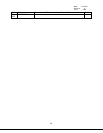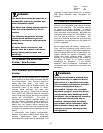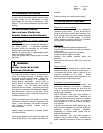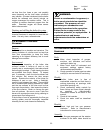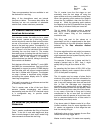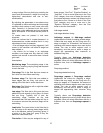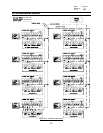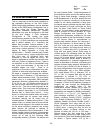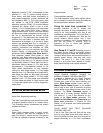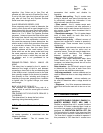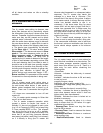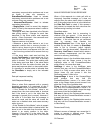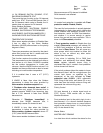Date: 8-4-2010
Revision: 0
Form: 2396
or drop a stage if the run-limiting is providing too
much heat (for example if a stage is running at a
higher-than commanded rate due to anti-
condensation).
By adjusting the parameters in an extreme way
it is possible to define add-stage and drop-stage
conditions that overlap or even cross over each
other. Certainly it is incorrect to do this, and it
would take a very deliberate and non-accidental
act to accomplish it. But there are two points in
this:
LL master does not prevent it, and more
important;
it will not confuse the LL master because it is
implemented as a state machine that is in only
one state at a time; for example:
• if its add-stage action has been triggered, it will
remain in this condition until either a stage has
been added, or
• the criteria for its being in an add-stage
condition is no longer met; only then will it take
another look around to see what state it should
go to next.
Assumptions:
Modulating stage The modulating stage is the
Sola that is receiving varying firing rate requests
to track the load.
First stage This is the Sola that was turned on
first, when no slave Solas were firing.
Previous stage The Sola that was added to
those stages that are firing. Just prior to the
adding of the Sola that is under discussion.
Next stage The Sola that will or might be added
as the next Sola to fire.
Last stage The Sola that is firing and that was
added the most recently to the group of slaves
that are firing. Typically this is also the
modulating stage, however as the load
decreases then the last-added stage will be at
its minimum rate and the previous stage will be
modulating.
Lead boiler The Lead boiler is the Sola that is
the first stage to fire among those stages which
are in the equalize runtime (Lead/Lag) group. If
a boiler is in the "Use first" group it may fire
before the Lead boiler fires.
First boiler A Sola may be assigned to any of
three groups: "Use First", "Equalize Runtime", or
"Use Last". If one or more Solas are in the "Use
First" category, then one of these (the one with
the lowest sequence number) will always be the
first boiler to fire. If there is no Sola in the
"Use
First" category and one or more are in the
"Equalize Runtime" category, then the First
boiler is also the Lead boiler.
Add-stage method
Add-stage detection timing
Add-stage request An Add-stage method
implements the criteria for adding another stage.
Criteria that may apply are the firing rate of a
stage or stages vs. a threshold, the amount of
operating point versus setpoint error seen by the
master, the rate at which setpoint error is
developing, and the rate at which a stage or
stages are approaching their maximum or
baseload firing rate.
Typically these use Add-stage detection
timing to determine how long these things have
persisted. When all criteria have been met for a
sufficient time, then an Add-stage request is
active.
Drop-stage method
Drop-stage detection timing
Drop-stage request A Drop-stage method
implements the criteria for dropping a stage.
Criteria that may apply are the firing rate of a
stage (or stages) vs. a threshold, the amount of
operating point versus setpoint error seen by the
master, the rate at which setpoint error is
developing, and the rate at which a stage or
stages are approaching their minimum firing
rate.
Typically these use Drop-stage detection
timing to determine how long these things have
persisted. When all criteria have been met for a
sufficient time, then an Drop-stage request is
active.
57



